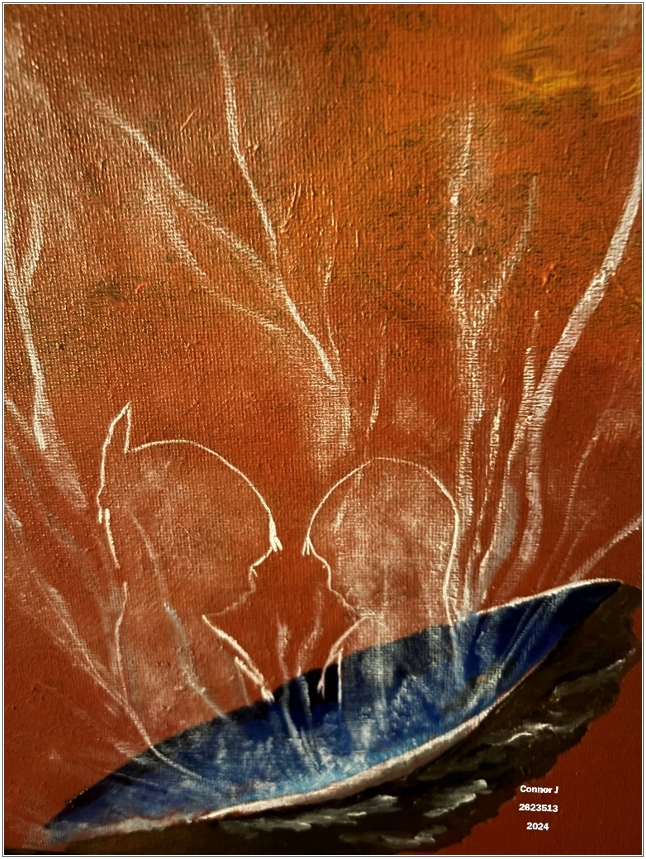Orange stands for resilience. Honouring the National Day for Truth & Reconciliation

Contents written below may be triggering for some. If you are experiencing distress, please contact the support numbers below.
- Indian Residential School Crisis Line: 1-866-925-4419
- Hope for Wellness Help Line (For Indigenous peoples): 1-855-242-3310
- Crisis services Canada: 1.833.456.4566 OR text: 45645
In 1973, school authorities took six-year-old Phyllis Webstad’s orange shirt, which she wore proudly on her first day of “school,” and replaced it with an institutional uniform.
This one act made a significant and lifelong impression on young Phyllis when she entered the St. Joseph Mission Residential School outside of Williams Lake, B.C. The loss of her orange shirt symbolizes the stripping away of culture, freedom, dignity and humanity of Indigenous children over many generations.
Orange Shirt Day was first commemorated in 2013 and – on June 3, 2021 – the federal government recognized every September 30 as the National Day for Truth and Reconciliation. The day honours the survivors of residential and day schools as well as their families, and all those who did not return home.
The September date of Orange Shirt Day, now the National Day for Truth and Reconciliation, is important. This was the time of year when the cars, trucks and buses entered our communities to “collect” our children and deliver them to their new reality – an unforgiving cultural assimilation through physical, mental, emotional and sexual abuse.
From the moment they arrived, our children were made to feel worthless, insignificant, and less than human. The first Residential School opened in 1831. It wouldn’t be until 2015 with the release of the Truth & Reconciliation Commission of Canada and its 94 Calls to Action that the decades of brutality and horrific experiences of tens of thousands of children at the hands of church and government officials would come to light.

In our lineage, family trauma, beyond land dispossession and displacement, started in Residential School at the hands of educators. The government and churches thought the Indigenous Peoples were incapable, living a life that was deemed unacceptable and in need of saving. And yet, thousands died at these schools. To this day, Indigenous Peoples have relatives buried in unmarked graves at crumbling residential schools hundreds of miles from their home. To date, seven of 139 Residential School grounds have been searched and 1,700 of our children have been recovered — not discovered because we always knew they were there.
This time is about creating space for everyone to have a deeper understanding of how far in our history the trauma and pain reaches. Now is the time for healing and moving forward together. Despite the intergenerational trauma experienced, the Indigenous Peoples are standing up to reclaim what was forcefully taken. We survived. We persevered. We are resilient.
I wear orange on this day, not in sadness, but proud of the strength, resilience and determination of my ancestors. Like many others, I see where in my history my family began to attend Residential Schools as their names suddenly changed to colonial names. I am their dream. It is now up to me to stand and reclaim all that was taken from them. I created the painting “Lost Children” to honour my grandparents and those who came before them who survived and for those who never made it home while attending Indian Residential School.
I invite you to join me, and millions of others in showing your support by wearing orange on September 30.
Responding to the TRC Calls to Action:
Winds of Change campaign – KAIROS Canada
Indigenous Rights – Winds of Change campaign: Education for Reconciliation actions – KAIROS Canada
Campaign on the United Nations Declaration on the Rights of Indigenous Peoples – KAIROS Canada
Q&A about the United Nations Declaration on the Rights of Indigenous Peoples – KAIROS Canada
National Centre for Truth and Reconciliation Commission of Canada
By Connor Sarazin, a member of the Algonquins of Pikwàkanagàn First Nation, an artist and KAIROS’ Operations and HR Specialist.
